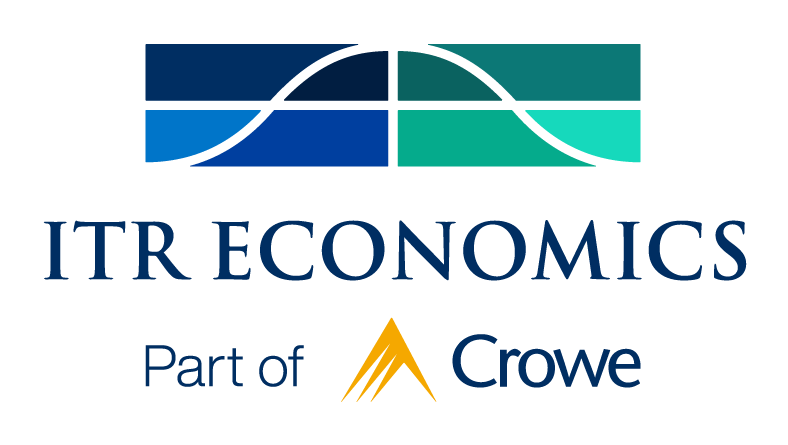May 13, 2024
- Home
- portfolio
- TrendsTalk
- May 13, 2024
US METAL PRODUCTION RECOVERY AND OUTLOOK
This week on TrendsTalk, host Taylor St. Germain discusses the current state of the metal industry. Tune in for insights on growth within the industry and discover how you can build your pricing strategy around steel and aluminum costs.

MEET YOUR HOST
Taylor St. Germain
As an experienced economist, Taylor St. Germain provides consulting services for small businesses, trade associations, and Fortune 500 companies across a spectrum of industries. His dynamic personality and extensive knowledge of economic trends and their business relevance are highly valued by clients and colleagues alike.
“Join me on the TrendsTalk podcast to explore the world of economics. Episodes offer insightful discussion and expert interviews. We cover relevant economic concepts in an accessible way. Whether you are a curious layperson or an industry professional, TrendsTalk is your go-to source for thought-provoking analysis and a deeper understanding of the economic forces shaping our world.”
Key Episode Takeaways
- 1:16 – Where metal production is in the business cycle
- 1:49 – Recovering from the low point in December 2022
- 2:22 – Has the growth rate improved?
- 2:57 – Price is a key component to the metals industry
- 3:27 – Aluminum pricing data and overview
- 4:42 – Steel pricing data and overview
- 5:47 – Where are these prices going in the future?
- 7:22 – US Industrial Production is accelerating in 2025
- 8:01 – Tariffs overview
- 10:29 – Summary and conclusion
The below transcript is a literal translation of the podcast audio that has been machine generated by Rev.
Hi everyone. My name’s Taylor St. Germain with ITR Economics, and welcome to this edition of TrendsTalk. We at ITR Economics are your apolitical and unbiased source of economic intelligence, and today I wanted to talk about metals. The reason I wanted to talk about metals is because just a few weeks ago, President Biden was interviewed talking about anticompetitive practices in relationship to China, in particular in relationship to steel and aluminum. Now, if we remember back to President Trump’s time in office, president Trump imposed aluminum and steel tariffs during his time, all of which are still in place today. Now, President Biden said that depending on the results of this investigation that he’s launching with the U.S. trade representatives, that there is a potential to consider tripling the tariff on aluminum and steel. So I thought talking about metals is timely given some of these comments. There’s a lot to unpack.
So let’s first start off with where are we in the economic business cycle in terms of metal production? I would suggest that we’re in Phase A, as we call it at ITR, which is the recovery phase of the cycle. That means that the production growth rates have hit lows and are rising, but not seeing that rate of growth pass above zero yet. We’re still in that slightly negative territory when you look at the most recent data point that we have.
So let me give you something to work off here, of course. If you look at the 3/12 rate of change for primary metals production, it reached a low point back in December of 2022. We’ve seen what I’ll call general improvement in that growth rate ever since. The most recent data point that we have comes from March of this year and highlights that primary metal production, the 3/12 rate of change, is currently sitting at -0.6%.
So has the growth rate improved? It sure has, but still not to a point where we’re in that positive territory. So that’s why we’re suggesting that metals is in recovery. Now, it’s likely we continue to see some of that, I’d call it sideways movement in the growth rates as the industrial economy continues to go through a weaker period in terms of industrial production and demand. But nonetheless, we have bounced off a low that we saw in the latter part of 2022.
Now, it’s important to understand where production is, production highlights, especially when we look at an index like this, volume for example. But price is really a key component to the metals industry, especially as we start to talk about potential tariffs coming our way. If we look at where aluminum prices are as we sit here today, aluminum prices have gone through a similar trend in terms of entering that recovery phase of the cycle.
So what I’m referencing here is aluminum spot prices, the spot price month-over-month growth rate bottomed out in February of 2023. And as we fast-forward to the most recent data point that we have available, aluminum prices are actually up 8.7% with the April data compared to the same month one year ago. So while the production index is still below zero but improving, when you look at prices, they have actually crossed above zero When we look at aluminum. So some of those inflationary pressures for aluminum starting to build as we sit here today. That’s very similar to what we’ve been seeing overall for steel. Again, similar trajectory, a little bit more volatility. When we look at steel, one of our trends report series is the U.S. steel scrap producer price index. We forecast this segment out four quarters. So if you’re interested in learning more about that, please look at the Trends Report.
But when we look at steel prices, they’re also in what I’d call that Phase A recovery trend. When we look at the growth rate for steel, we saw the 3/12 rate of change, that quarter-over-quarter growth rate for steel scrap prices bottom out again in December of 2022. That low point actually hitting the low point the same time the metal production low point occurred, and we’ve seen that growth rate continued to improve. In January of 2024, steel prices on a 3/12 rate of change, were up 12.8%. Now in March as we sit here today, they’re down about 4.1%. But again, what I want you to take away is this overall upward trajectory that we’ve seen in the growth rates for both aluminum and steel. So whether or not we’re in the positive territory, the growth rates have clearly been improving since some of these lows that we saw late in 2022 and into 2023.
So this all begs the question of, “Taylor, well, where do you see some of these commodity prices going here in the future?” Well, I’d call out our steel forecast, because some end markets for steel are projected for a soft landing in ’24, and others are projected for a hard landing or negative growth rates in 2024. It’s a little bit of a mixed bag, and that’s why we see steel prices remaining, again, in terms of scrap prices remaining relatively flat through the second half of the year. And then that price rise really starting in 2025, as most of these end markets for steel will be moving into that accelerating growth phase of the business cycle. So if we really highlight some of the drivers of steel, we can look at automobiles for example. North America light vehicle production, a clear demand driver for steel is projected for a soft landing this year.
So that might be contributing to some elevated costs because the end market demand pull is more significant. But when you look at other industries like commercial construction for example, we see some weakness developing in some commercial construction segments as we move late into 2024 and into early ’25. So that’s what I mean. There are some end markets that will demand more steel. There’s some end markets that will demand less steel, and as a result, we expect steel prices to remain relatively flat through ’24 before seeing a pickup in ’25.
In 2025, industrial production is accelerating. Most subsectors of industrial production are accelerating, and that should contribute to some higher costs. 2024, a lot of these input costs like aluminum, like steel, some of these commodities will start to see that momentum build because commodity prices tend to lead the economy, but it’s not until 2025 when these end markets are really accelerating, where we expect to see the most significant price rise for some of these commodities, at least when comparing to some of the recent trends.
Now, as we think about tariffs, first of all, when a president announces an investigation, it might be months before we see the results of this investigation. So I know President Biden mentioned the tripling of these potential tariffs on aluminum and steel. Now, what we’ve learned from past tariff is that tariffs are often inflationary. We typically see price rise as a result of tariffs. If we’re blocking some of the Chinese steel and aluminum from coming into the U.S., it typically raises costs for U.S. producers. And then the folks in the U.S. businesses and consumers that are consuming this steel are consuming steel at a higher price, and then they’re trying to find ways to pass along this higher price, and eventually it makes its way all the way back to the consumers. If companies don’t find ways to pass along increased costs that do come from tariffs, then it’s often something that eats into their margins, right?
So we do find that tariffs are often inflationary all the way from the top working its way through to the consumer. Now, that might be good news if you’re producing steel. You might see more demand, you might see higher prices. Now, another thing to consider with tariffs is this steel from China can still work its way into the U.S. by circumventing through other countries like Canada or Mexico for example. Now, of course, the government tries to take steps to prevent that, but not always successful. So often there are still ways that this steel from China can work its way into the U.S. by circumventing through other countries. There’s a lot to unpack when it relates to tariffs in typically the way we view tariffs is inflationary. We have to find a way to pass along these increased costs. I know there’s some people that benefit from tariffs. I don’t want to shy away from that point, but it does create a challenge, especially when we look at prices and costs.
We’ll continue to keep you updated on that. Again, our general expectation is that we would see price rise in aluminum and steel in 2025 as inflation picks up anyway. But of course, when you add tariffs into the mix, that could be an additional layer of complexity in terms of understanding what this price rise looks like.
So overall, the takeaways from our conversation today is that the metal industry is in recovery in terms of production. We’re also seeing many costs in terms of steel and aluminum starting to build that upward momentum in the growth rates, even if they’re not slight above the year ago level just yet. But this price rise is coming as we move closer to 2025 and a lot of these end markets start to accelerate once again. Something that you should be prepared for, have your pricing strategy in place, be looking ahead to the future, and we’ll keep you updated on policy and legislation as it impacts some of these data series.
I hope you found this information helpful. Please remember to like and subscribe to TrendsTalk wherever you listen to your podcast, and I’m looking forward to talking to you all on the next one. Take care.





